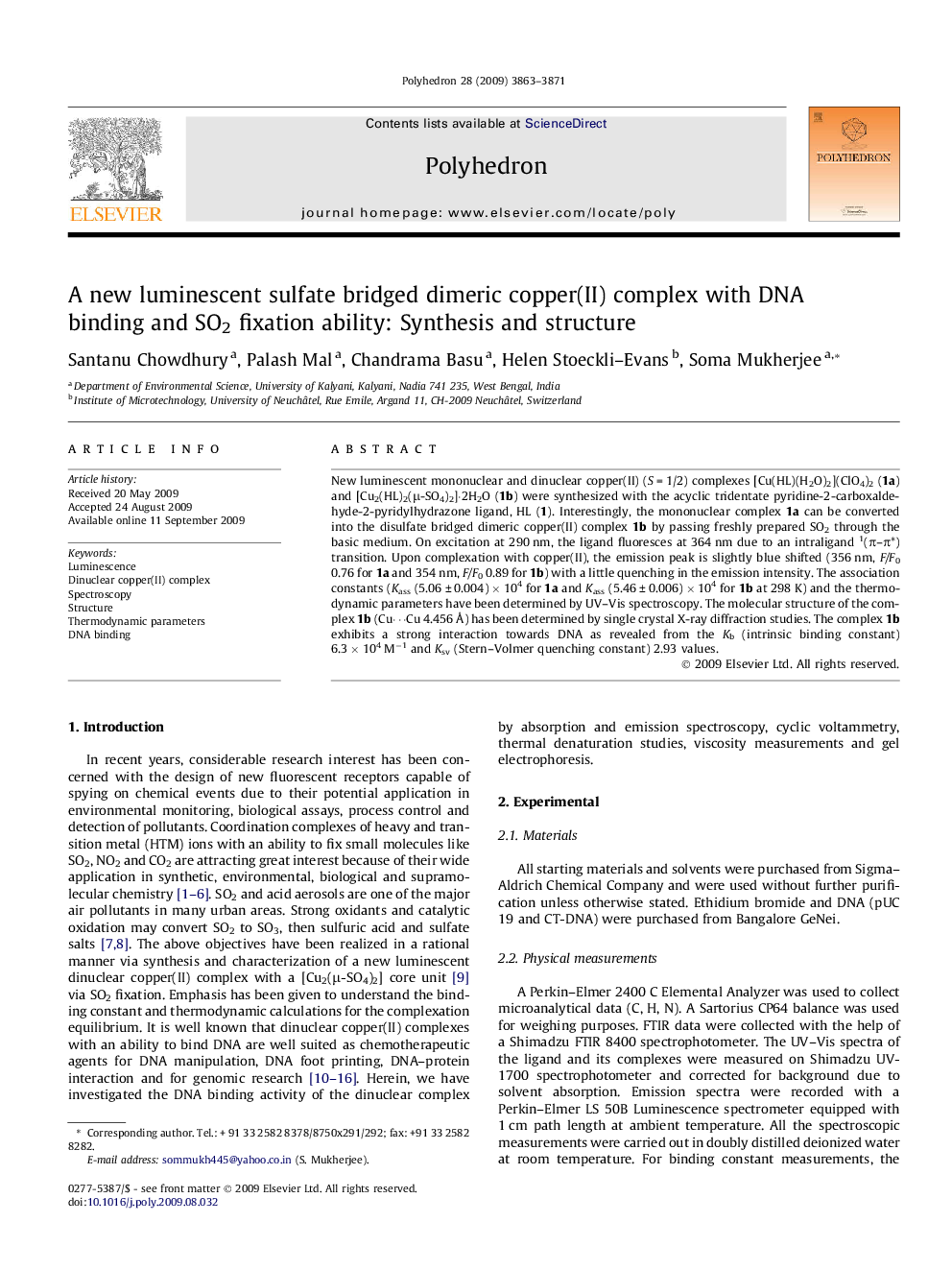| Article ID | Journal | Published Year | Pages | File Type |
|---|---|---|---|---|
| 1337135 | Polyhedron | 2009 | 9 Pages |
New luminescent mononuclear and dinuclear copper(II) (S = 1/2) complexes [Cu(HL)(H2O)2](ClO4)2 (1a) and [Cu2(HL)2(μ-SO4)2]·2H2O (1b) were synthesized with the acyclic tridentate pyridine-2-carboxaldehyde-2-pyridylhydrazone ligand, HL (1). Interestingly, the mononuclear complex 1a can be converted into the disulfate bridged dimeric copper(II) complex 1b by passing freshly prepared SO2 through the basic medium. On excitation at 290 nm, the ligand fluoresces at 364 nm due to an intraligand 1(π–π∗) transition. Upon complexation with copper(II), the emission peak is slightly blue shifted (356 nm, F/F0 0.76 for 1a and 354 nm, F/F0 0.89 for 1b) with a little quenching in the emission intensity. The association constants (Kass (5.06 ± 0.004) × 104 for 1a and Kass (5.46 ± 0.006) × 104 for 1b at 298 K) and the thermodynamic parameters have been determined by UV–Vis spectroscopy. The molecular structure of the complex 1b (Cu⋯Cu 4.456 Å) has been determined by single crystal X-ray diffraction studies. The complex 1b exhibits a strong interaction towards DNA as revealed from the Kb (intrinsic binding constant) 6.3 × 104 M−1 and Ksv (Stern–Volmer quenching constant) 2.93 values.
Graphical abstractNew luminescent mononuclear and dinuclear copper(II) complexes [Cu(HL)(H2O)2](ClO4)2 (1a) and [Cu2(HL)2(μ-SO4)2]·2H2O (1b) have been synthesized using pyridine-2-carboxaldehyde-2-pyridylhydrazone, HL (1). The molecular structure of 1b has been determined by single crystal X-ray diffractometry. The mononuclear complex 1a can be converted into the disulfate bridged dimeric copper(II) complex 1b by passing freshly prepared SO2 through the basic medium. The complex 1b exhibits a strong DNA interaction, as revealed from absorption and emission spectroscopy, gel retardation assay, cyclic voltammetry, thermal denaturation studies and viscosity measurements.Figure optionsDownload full-size imageDownload as PowerPoint slide
